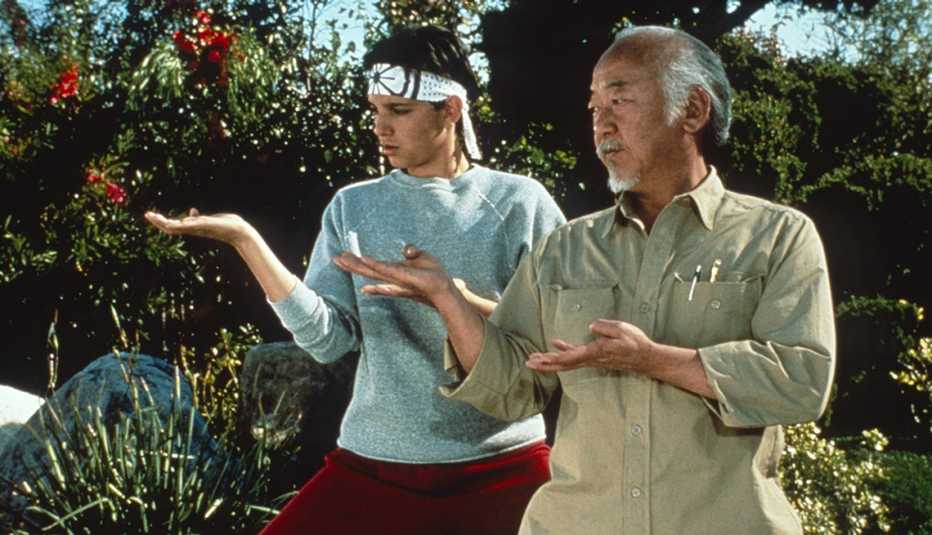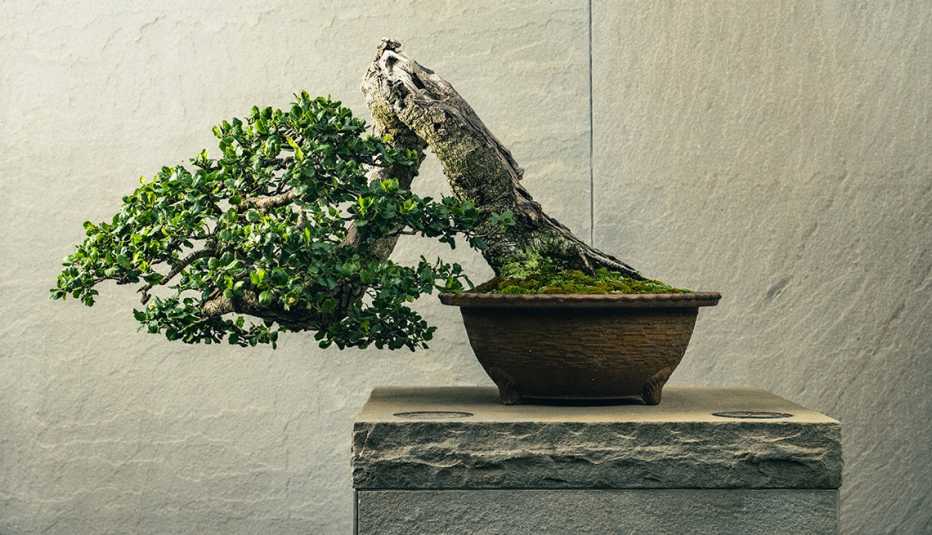Staying Fit


Anyone who’s watched The Karate Kid knows that Mr. Miyagi had a fondness for bonsai trees. He meticulously trimmed them in his shop and in his home, and Karate Kid 3 was all about saving a bonsai tree. Heck, a bonsai was even his dojo’s symbol that appeared on the gi (karate clothing).


AARP Membership— $12 for your first year when you sign up for Automatic Renewal
Get instant access to members-only products and hundreds of discounts, a free second membership, and a subscription to AARP the Magazine.
And now I, too, have a fondness for bonsai. I owe much to Mr. Miyagi (played by Japanese actor Noriyuki “Pat” Morita, who died in 2005).
I credit nostalgia. I’m a 1980s kid, and like any good and proper ’80s kid, I grew up on a steady diet of cartoons created to sell toys, Duran Duran and, of course, The Karate Kid. I was one of thousands (millions?) of kids practicing the crane kick in my backyard, on top of whatever stump I could get my grubby little feet on.
I even gave a karate class a go, but the multipurpose room at the local YMCA in Columbus, Ohio, just didn’t compare to Miyagi-do karate. And besides, is it even possible to learn karate without sanding or painting?
At the end of the day, I didn’t have a bully to ward off, and Sensei Doug wasn’t charismatic enough to keep me engaged. I moved on to bigger and better things, such as slap bracelets and recording Van Halen songs off the radio to round out my killer mix tapes.
Fast-forward 20-plus years to the Groundhog Day-esqe repetitive nature of COVID lockdowns. My wife and I have two young children, who made it their mission to bludgeon my sanity with YouTube videos, video games and endless requests for whatever new (and terrible) toy appeared during the last commercial break. We love our outdoor time, but we live in the South and can only be so active when it is approximately 200 degrees with 150 percent humidity.


One day after putting the kids down for the night, I was on Netflix when it recommended Cobra Kai, a 2018 reboot of the popular ’80s film franchise. I’d heard about this show but assumed it was just a joke regarding the lack of original intellectual property coming out of Hollywood, like going back to the well 10 times with The Fast & the Furious franchise, when six was obviously the right amount.
But it was real and starred two of the original cast: Daniel LaRusso (Ralph Macchio) and Johnny Lawrence (William Zabka). I was immediately all in and binged four seasons in under a week, with no regrets. My wife, two kids and I also rewatched the first three Karate Kid movies and considered changing the name of our 4-year old to Daniel. It was rad.
While revisiting the Karate Kid Cinematic Universe (the KKCU?), something became apparent that I didn’t catch the first time around: Mr. Miyagi really likes bonsai, and I’ll be darned if the KKCU (I’m just going to make this a thing now) didn’t get me to bite and proceed to set the hook with the fantastic trees in seemingly every other scene in Cobra Kai.
I find bonsai, roughly translated from Japanese to “tree in a pot,” to be particularly appealing. It addresses my twin hearts: art and horticulture, the science of growing things. Bonsai’s goal is creating a miniature version (the art bit) of a very old tree (the horticulture bit). Any tree species can be a bonsai, but some are better suited to life in a pot and miniaturization. What started out as a dopey hobby borne from my Karate Kid bingeing ended up having a transformative effect on me. Like a grasshopper to a butterfly, or something like that.
I went to my local nursery in Myrtle Beach, South Carolina, and purchased a bonsai pot, soil and training wire. Then I moseyed to the Home Depot and plucked a dwarf Alberta spruce in a 3-gallon pot from a sale rack. Almost any tree can be turned into a bonsai, and my first one was going to be a clearance-special training tree. I named him Daniel — Danny, for short.
After I put Danny in the pot, I broke out my pruning shears, went to town and proceeded to make a whole mess of beginner mistakes. I had retained just enough information from KK1 and Reddit to be dangerous, but not enough to even approach being good. Here’s my first piece of advice: You can always cut a branch off, but you can’t put it back. This is particularly true with conifers (cone-bearing trees). I aspired for an ancient, wise tree that might invoke memories of Mr. Miyagi. Instead, I ended up with an anemic model of 1984 Ralph Macchio.




































































More From AARP
Watch: Hand Lettering for Beginners With Illustrator Molly Jacques
In this class, you’ll learn the basics for writing expressive letters to create a sign
25 Ways to Practice Self-Care
Easy and affordable strategies that can have a lasting and beneficial impact on your mental state